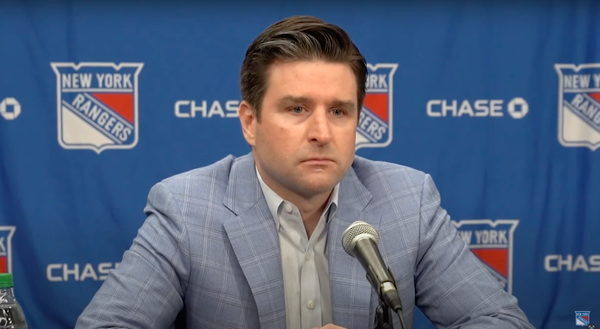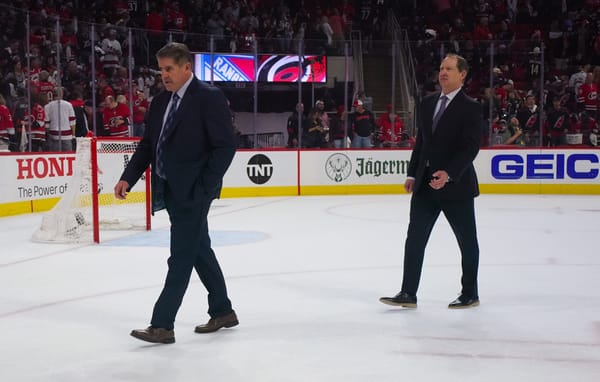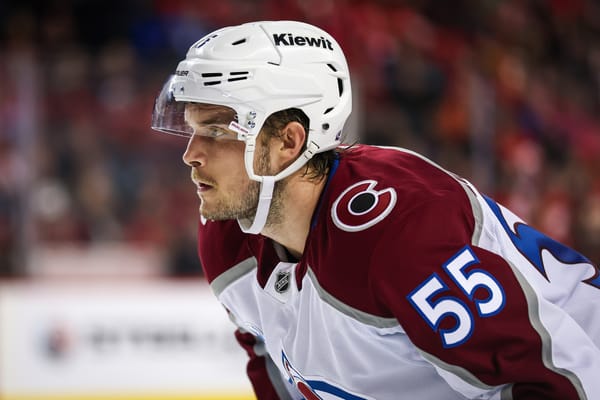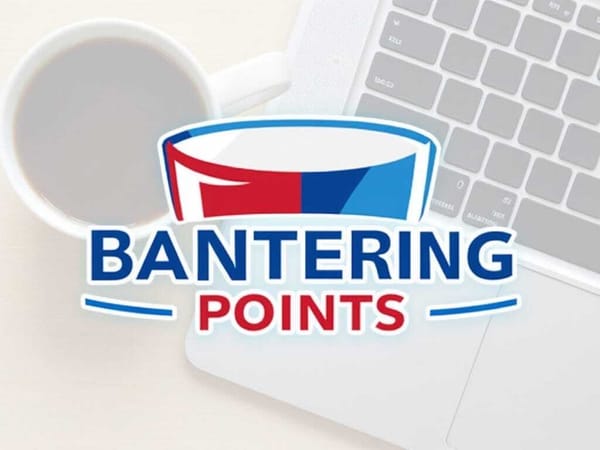New York Rangers Analysis: How many 'top players' does it take to win in the NHL?
Depth is undoubtedly very important to any hockey team, but does it take a certain number of 'top players' to rise to hockey's pinnacle?
The dog days of the NHL-less summer bring about some different coverage, and NHL.com has been coming out with lists of top players at their respective positions. The series of stories has inevitably created some chatter among hockey communities on the internet, many of which arguing the overrated-ness or undervalued rank of certain players.
But here at the Banter, we're going to take a different approach to this topic.
Arguing the individual order of where a player ranks can be rather futile. After Sidney Crosby, there's viable arguments to be made for a handful of players as the number two center in the league. Maybe you think Alex Ovechkin is the top right winger, or maybe you're in the corner of the more complete Corey Perry.
The Rangers aren't without players who have appeared on the NHL's lists. Rick Nash, Martin St. Louis, and Ryan McDonagh have already made the cut at their respective positions. Henrik Lundqvist is easy money to be ranked among the league's top puck-stoppers. The question is, how many 'top players' does a team need to be successful in the league?
Outside of the four aforementioned Rangers, there's credible arguments to be made for two others when ranking the "best" at certain position, which still doesn't tell the entire story. Depending on how many players you want to occupy your list, the difference between the very best (take Crosby) and say, the 30th-best center in the league—still potentially considered a top-tier player—is considerable. For the purposes of this piece, we'll limit the depth of these ranks to 20 players. Because there are fewer goalies in the league, we'll limit that list to the top 10, and again, assume Lundqvist will fall somewhere in that range.
Again, defining someone as a top player is rather subjective. To narrow down this list, we'll look at different criteria for players based on positions. For forwards: Where did they finish among the league's top scorers, how were their possession numbers, and did they receive any Selke votes? For defenseman, we'll virtually look at the same statistics, only incorporating Norris votes, when taking into account the Norris Trophy has turned into a "best offensive-defenseman" award. If a player is on the cusp of being considered in that top grouping of his position, he will be included.
Another element that's important to take note of is this doesn't necessarily reflect a player who would be taken with one of the first 20 selections used in an expansion draft for his position, simply one whose production was good enough to be considered in the top 20 that season. Conceptually, this is more about roster balance and top-heaviness.
Tracking Top Players
| Year | Team | Finish | Number of Top 20 Players | Players |
| 2013-14 | Kings | Won Stanley Cup | 3 | Anze Kopitar; Drew Doughty; Jake Muzzin |
| 2013-14 | Rangers | Lost in Cup Final | 5 | Lundqvist; Nash; McDonagh; St. Louis; Mats Zuccarello |
| 2013-14 | Blackhawks | Lost in Western Final | 6 | Jonathan Toews; Patrick Kane; Patrick Sharp; Marian Hossa; Duncan Keith; Brent Seabrook |
| 2013-14 | Canadiens | Lost in Eastern Final | 4 | Carey Price; P.K. Subban; Andrei Markov; Max Pacioretty |
| 2012-13 | Blackhawks | Won Stanley Cup | 5 | Toews; Kane; Sharp; Hossa; Keith |
| 2012-13 | Bruins | Lost in Cup Final | 6 | Tuukka Rask; Zdeno Chara; Patrice Bergeron; Milan Lucic; Tyler Seguin; Brad Marchand |
| 2012-13 | Kings | Lost in Western Final | 4 | Kopitar; Doughty; Justin Williams; Dustin Brown |
| 2012-13 | Penguins | Lost in Eastern Final | 6 | Sidney Crosby; Evgeni Malkin; James Neal; Chris Kunitz; Pascal Dupuis; Kris Letang |
| 2011-12 | Kings | Won Stanley Cup | 5 | Jonathan Quick; Kopitar; Doughty; Williams; Brown |
| 2011-12 | Devils | Lost in Cup Final | 3 | Ilya Kovalchuk; Zach Parise; Patrik Elias |
| 2011-12 | Phoenix | Lost in Western Final | 4 | Mike Smith; Ray Whitney; Radim Vrbata; Shane Doan; Keith Yandle |
| 2011-12 | Rangers | Lost in Eastern Final | 2 | Lundqvist; Marian Gaborik |
| 2010-11 | Bruins | Won Stanley Cup | 5 | Tim Thomas; Bergeron; David Krejci; Lucic; Chara |
| 2010-11 | Canucks | Lost in Cup Final | 6 | Roberto Luongo; Henrik Sedin; Daniel Sedin; Ryan Kesler; Mikael Samuelsson; Christian Ehrhoff |
| 2010-11 | Lightning | Lost in Eastern Final | 3 | Steven Stamkos; St. Louis; Teddy Purcell |
| 2010-11 | Sharks | Lost in Western Final | 7 | Antti Niemi; Joe Thornton; Patrick Marleau; Joe Pavelski; Ryan Clowe; Dany Heatley; Dan Boyle |
| 2009-10 | Blackhawks | Won Stanley Cup | 6 | Toews; Kane; Sharp; Hossa; Keith; Brian Campbell |
| 2009-10 | Flyers | Lost in Cup Final | 1 | Chris Pronger |
| 2009-10 | Sharks | Lost in Western Final | 6 | Thornton; Marleau; Clowe; Heatley; Boyle; Evgeni Nabakov |
| 2009-10 | Canadiens | Lost in Eastern Final | 1 | Tomas Plekanec |
Average number of top players per Cup winner: 4.6
Range of top players in Cup winners: 3-6
Range of top players per team on list: 1-7
Now for some takeaways. The Rangers certainly have enough marquee talent to compete for a Cup, while there are undoubtedly a number of other influencing factors. To say, "Team A has this many top players, so that automatically means it can compete for a Cup," is shortsighted, and doesn't tell the whole story.
(Also, in going back and trying to identify players for this chart, found that Dan Girardi finished sixth in Norris voting in 2012. Good job, voters.)
Another interesting trend to take note of is that only two of the five past Cup winners really had an elite, top goalie. And even one of those teams in the 2012 Kings had a goalie in Quick who is by no stretch elite in his body of work, just that season. It's become obvious that you can get away with mediocre goaltending and still be a league power (see: Chicago and Los Angeles), but it's something that is tangibly conceptualized here.
My god, were those some talented Sharks teams. Wait, most of those players are still around? If anything, it's just an older group, while Boyle is gone, but Marc-Edouard Vlasic is just as good, and guys like Logan Couture are there. If that nucleus never wins a Cup, it will really be a shame for that organization years later.
Not because they were lacking in talent or anything (although they do come in on the low-end of this chart) but again, always fun to reiterate just how much the 2011-12 Rangers overachieved.
@ev_sporer @hockey_ref Thank god for Hank in that 2011 season pic.twitter.com/oqbx5K8gEv
— Kevin Power (@Kpower90) September 5, 2014 In that magical run to the Eastern Conference Final, the Rangers had the fourth-highest PDO in the league, and the 23rd CF%. Lundqvist was an absolute world-beater, while Gaborik got hurt, depleting the team's one offensive weapon. If you're thin on top talent, you can't have 50 percent of your calvary injured, especially when it represented about 100% of the team's offense.
Which brings us to one final point, and one more logical, repetitive plea to leave Rick Nash the heck alone. From a depth perspective, last year's Rangers team was lightyears ahead of that 2012 team. There's really no use in me arguing Nash's effectiveness despite lack of productivity during this past postseason. But here's the larger point: Had the Rangers been on the same competitive level with the Kings (which they weren't) and they would have been able been just fine sans the lack of scoring from their top scorer. Los Angeles was simply a possession monster, the likes of which no one in the East was going to stop. But the Rangers had enough secondary and complimentary options positioned around Nash that, given a level playing field, they could have won a series.




